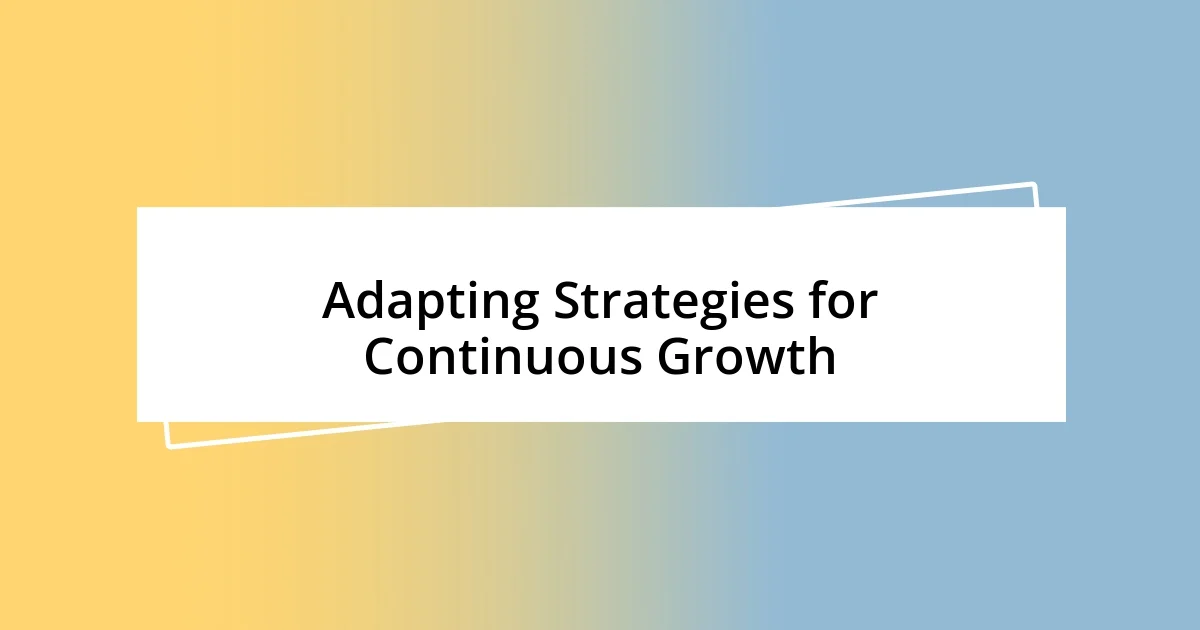Key takeaways:
- Keyword research is essential for connecting content with the target audience, guiding content creation, and enhancing SEO visibility.
- Crafting engaging headlines is crucial for increasing click-through rates; they should be clear, emotionally appealing, and spark curiosity.
- Measuring traffic and performance is vital for understanding content effectiveness, with a focus on conversion rates to evaluate meaningful engagement.

Understanding SEO Copywriting Basics
SEO copywriting combines the artistry of writing with the science of search engine optimization. I remember when I first grasped this concept; it felt like finding the missing puzzle piece in my marketing strategy. Have you ever felt overwhelmed by the jargon? Understanding the basics doesn’t have to be daunting.
At its core, SEO copywriting involves crafting content that is not only engaging but also strategically optimized for search engines. I’ve found that balancing these elements is key—writing for readers while keeping search algorithms in mind can feel like walking a tightrope. But when you get it right, the traffic boost is incredibly rewarding!
Keywords play a pivotal role in SEO copywriting. I’ll never forget the moment I discovered how the right keywords could attract my target audience like a magnet. It’s fascinating to think about how just a few well-chosen words can make all the difference. Have you taken the time to research your keywords lately? The right ones not only improve your visibility but also connect you with the readers who are genuinely interested in your content.

Importance of Keyword Research
Diving into keyword research was a game-changer for me. The first time I noticed how the right keywords transformed my website traffic, I felt a rush of excitement. It was like having a secret weapon in my marketing arsenal. I realized that keywords are not just random words; they are the bridge that connects my content with the audience seeking it. This connection can mean the difference between a website that floats into oblivion and one that thrives.
Here’s why keyword research is essential:
– Target Audience Understanding: It helps you grasp what potential readers are searching for.
– Content Creation: Keywords provide direction for crafting relevant and valuable content.
– Competitive Advantage: Identifying high-value keywords gives you an edge over competitors.
– SEO Optimization: Strategically placing keywords boosts your visibility in search engine results.
– Traffic Growth: Well-researched keywords lead to increased organic traffic, enhancing engagement and conversions.
Looking back, I wish I had prioritized keyword research sooner. It would have saved me countless hours of creating content that, while enjoyable to write, didn’t resonate with my audience.

Crafting Engaging Headlines
When it comes to crafting engaging headlines, I can’t stress enough how much of a game-changer they can be for your content. I remember experimenting with different styles and tone; seeing how a small tweak in the wording dramatically increased my click-through rates. It’s as if I discovered the key to unlocking my audience’s curiosity. Headlines should not just inform—they need to intrigue, spark emotions, and invite action. Have you tried using questions or numbers in your headlines? They can often lead to better engagement.
Another vital aspect of crafting headlines is the importance of clarity. I once wrote a catchy headline that I thought was clever, but my audience was left confused. This experience taught me that an effective headline should convey the core of the content without overly complex language. Striking the right balance between creativity and clarity can draw in readers who are looking for solutions or insights. What I realized was that if readers don’t understand the headline right away, they are more likely to move on without a second thought.
To put it simply, crafting engaging headlines is like creating an invitation to your content. I always try to think about what would grab my attention if I were scrolling through a feed. A compelling headline can increase interest and traffic significantly, making it essential to put in that extra effort. So, what elements do you think your ideal headline should include? Crafting effective headlines is an art and a science that can significantly elevate your content’s performance in a crowded digital space.
| Headline Element | Impact |
|---|---|
| Clarity | Ensures the reader understands what to expect, reducing confusion. |
| Emotional Appeal | Creates a connection, prompting readers to click to learn more. |
| Curiosity | Invites readers to delve deeper, enhancing engagement. |
| Use of Numbers | Grabs attention and suggests straightforward content (e.g., “5 Tips for…”). |

Writing Compelling Meta Descriptions
Crafting compelling meta descriptions is one of those subtleties that can make a huge difference in your SEO strategy. I remember the first time I transformed a bland, generic meta description into a vibrant, inviting one—it felt like I had just sprinkled fairy dust on my content. Meta descriptions serve as a mini advertisement, briefly conveying what readers can expect. By incorporating relevant keywords and an engaging tone, you can pique interest and encourage clicks from search engine results.
One of the most striking lessons I learned is the importance of character count; staying within the 150-160 character range is crucial. I once created a description that was too lengthy, and the search engine neatly cut it off mid-sentence. Can you imagine potential readers seeing only half of my message? It taught me that every word counts. A well-crafted meta description not only summarizes your content but also compels readers to find out more, offering both clarity and enticement.
I find adding a sense of urgency or a call to action can elevate a meta description from good to great. I often use phrases like “discover now” or “learn today,” which not only emphasize immediate action but also connect emotionally with the readers. The moment I started experimenting with these techniques, the increase in my click-through rates was tangible. It made me wonder what hidden gems lay in my other meta descriptions, just waiting for a little charm and finesse.

Utilizing Internal and External Links
I’ve always seen internal and external links as invaluable tools in my SEO copywriting journey. When I first started implementing them, I noticed a boost in user engagement almost immediately. Internal links keep readers on my site longer, guiding them to relevant content. It’s like leading someone down a well-organized path in a library, where they can discover even more treasures. Don’t you think it’s essential to take your readers on that journey?
On the other hand, leveraging external links can significantly enhance my content’s credibility. I remember linking to authoritative sources during a blog post about digital marketing strategies, and it felt like I was building a bridge to trusted information. This not only enriched my content but also established my voice as a reliable resource. I often ask myself: how can I provide more value to my readers? The answer often lies in thoughtfully chosen external links that elevate the overall quality of my content.
Finding a balance between internal and external linking has been quite a learning experience for me. Sometimes, I get excited about linking out to various sources, but I must remind myself to keep it focused. Too many links can overwhelm my readers, making it easy for them to get lost. By reflecting on my content strategy and keeping my audience’s journey in mind, I’ve found a rhythm that works well. Have you noticed how certain links can transform the way readers interact with your material? It’s one of those subtle adjustments that can lead to significant traffic increases over time.

Measuring Traffic and Performance
Measuring traffic and performance is where the magic of SEO copywriting truly reveals itself. I remember the rush of checking my analytics for the first time after implementing my new strategies—I was not just seeing numbers, but a reflection of my efforts. Tools like Google Analytics can be a game-changer, helping you observe not just how many people visited your page, but also which pieces of content generated the most engagement. Don’t you just love that moment when you realize your work is resonating?
One metric that stands out to me is bounce rate. I’ve often found it a little disheartening when visitors leave my site without reading further. It’s like inviting someone to a party and seeing them leave right after they step in! One day, I made a few tweaks to my content, including better internal links and more engaging headlines, and watched as my bounce rate dropped. It was then that I understood how critical it is to hold a reader’s attention right from the start.
Traffic isn’t the sole measure of success; conversion rates are where the real reward lies. A higher visitor count is great, but if they’re not taking action, like signing up for my newsletter or making a purchase, then what’s the point? I experienced this firsthand with a recent campaign: my traffic surged, but the conversions lagged. It pushed me to refine my calls to action, transforming those visitors into active participants in my content. It’s a reminder that every click counts, but every meaningful interaction is what ultimately drives growth.

Adapting Strategies for Continuous Growth
Adapting my strategies for continuous growth has been a crucial part of my SEO journey. I always think back to a time when I noticed my traffic plateauing. It was frustrating, to say the least! That moment pushed me to re-evaluate my approach and seek new angles, much like a hiker adjusting their route after hitting a dead end. By experimenting with content formats and audience targeting, I was able to uncover fresh opportunities for engagement.
I’ve found that staying updated with SEO trends is just as vital as refining my own content. I remember attending a webinar about the importance of user experience and mobile optimization, which shifted my perspective significantly. I realized that adapting isn’t just about changing my writing; it’s also about being responsive to evolving tools and technologies. How often do we overlook the nuances of user behavior? My personal experience has taught me that tapping into the latest strategies can breathe new life into my work.
Data analysis also plays a key role in adaptation. When I revisit my old content, it sometimes feels like revisiting an old friend—you notice new things and realize areas for improvement. I recall re-analyzing a popular post after a few months and discovering keywords I hadn’t initially capitalized on. It was an “aha!” moment that spurred me to update my content and, in turn, saw my traffic bump up noticeably. Have you ever had similar moments of revelation? Adjusting based on consistent reflection is how I keep my growth trajectory not just alive but thriving.














